Showing posts with label Opel. Show all posts
Showing posts with label Opel. Show all posts
Sunday, May 15, 2011
Opel Insignia
Monday, March 28, 2011
2011 Opel Kadett
However, under Opel's internal naming convention, successive generations of the Astra platform are treated as a logical continuation of the Kadett lineage - hence the original 1992 Astra was designated Astra F in relation to the previous Kadett E - this convention has continued through to the current (2009) Astra J.
Wednesday, February 23, 2011
Opel Zafira
 The Opel Zafira is a compact MPV engineered and produced by the German automaker Opel. The Zafira is branded as Vauxhall, and Chevrolet, depending on the market. In Japan, the Zafira was sold as Subaru Traviq. The car first appeared in 1999, and a second generation model was introduced in 2005. The Opel Zafira is produced in Bochum in Germany. The Opel Zafira has seven seats arranged in three rows, the back row of which can be folded into the floor to create more space, individually or together, rather than requiring that the extra seats be physically removed from the vehicle. The system was named Flex 7.The first generation of Zafira is usually referred to as Zafira A, as is customary for Opel models. The car was based on the same platform as the 1998 Astra G/B and shared much in common with that car. The Zafira A body was used in GM's concept hydrogen-powered fuel cell vehicle the HydroGen3. The Opel Zafira A was replaced by Zafira B in Europe and Japan from 2005, but is still sold in most other markets, except for Australia and New Zealand, where the model was cancelled altogether. The Zafira was sold in the Philippines from 2001 to 2005, being the last European-based Opel car to be sold in the Philippines after they stopped selling the Opel Astra in 2003.The Opel Zafira comes with a variety of engines adopted from the Astra. For Europe, there was a CNG-powered version and a 200 hp turbocharged version by the Opel Performance Center. In Brazil, the Zafira is also available with a flexible fuel engine. European versions of the Zafira had these engines:
The Opel Zafira is a compact MPV engineered and produced by the German automaker Opel. The Zafira is branded as Vauxhall, and Chevrolet, depending on the market. In Japan, the Zafira was sold as Subaru Traviq. The car first appeared in 1999, and a second generation model was introduced in 2005. The Opel Zafira is produced in Bochum in Germany. The Opel Zafira has seven seats arranged in three rows, the back row of which can be folded into the floor to create more space, individually or together, rather than requiring that the extra seats be physically removed from the vehicle. The system was named Flex 7.The first generation of Zafira is usually referred to as Zafira A, as is customary for Opel models. The car was based on the same platform as the 1998 Astra G/B and shared much in common with that car. The Zafira A body was used in GM's concept hydrogen-powered fuel cell vehicle the HydroGen3. The Opel Zafira A was replaced by Zafira B in Europe and Japan from 2005, but is still sold in most other markets, except for Australia and New Zealand, where the model was cancelled altogether. The Zafira was sold in the Philippines from 2001 to 2005, being the last European-based Opel car to be sold in the Philippines after they stopped selling the Opel Astra in 2003.The Opel Zafira comes with a variety of engines adopted from the Astra. For Europe, there was a CNG-powered version and a 200 hp turbocharged version by the Opel Performance Center. In Brazil, the Zafira is also available with a flexible fuel engine. European versions of the Zafira had these engines:* 1.6 -- 4-cylinder,(ECOTEC) 74 kW (101 bhp) - Fuel economy 9–10 km/litre in the city, and 14–15 km/litre on the highway.
* 1.8 -- 4-cylinder,(ECOTEC) 92 kW (125 bhp) - Fuel economy 6–8.5 km/litre in the city, and 11–12 km/litre on the highway.
* 2.0 Turbo—4-cylinder, 147 kW (200 bhp; OPC/GSI version) - Fuel economy 5.9–8 km/litre in the city, and 9.5–11 km/litre on the highway.
* 2.2 -- 4-cylinder, 108 kW (146 bhp) - Fuel economy 12.2 litre/100 km in the city, and 7.0 litre/100 km on the highway.
* 2.0 -- 4-cylinder turbo diesel, 74 kW (100 bhp) - Fuel economy 11–12.5 km/litre in the city, and 13–15 km/litre on the highway.
* 2.2 -- 4-cylinder turbo diesel, 92 kW (125 bhp) - Fuel economy 11–13.5 km/litre in the city, and 14–15.8 km/litre on the highway.
* 2.2 -- 4-cylinder turbo diesel, 107 kW (147 bhp) - Fuel economy 12–14 km/litre in the city, and 14–15.8 km/litre on the highway.
* 1.6 -- 4-cylinder Twinport, 77 kW (105 bhp) – To be replaced by an improved, 115 bhp (86 kW; 117 PS) version in 2008.
* 1.8 -- 4-cylinder, 103 kW (140 bhp)
* 2.0 Turbo—4-cylinder, 147 kW (200 bhp)
* 2.0 Turbo—4-cylinder, 177 kW (240 bhp; OPC/VXR version)
* 2.2 -- 4-cylinder, 110 kW (155 bhp)
* 1.9 -- 4-cylinder turbo diesel, 74 kW (100 bhp)
* 1.9 -- 4-cylinder turbo diesel, 88 kW (120 bhp)
* 1.9 -- 4-cylinder turbo diesel, 110 kW (150 bhp)
Thursday, December 16, 2010
New Opel Vectra in 2010
The Opel Vectra is a large family car that was engineered and produced by Opel, the German subsidiary of General Motors (GM). In the United Kingdom, the car was sold under the Vauxhall marque as the Vauxhall Cavalier and later as the Vauxhall Vectra, from 1995 onwards. It has also been sold by Holden in Australasia as Holden Vectra, and Chevrolet in Latin America as Chevrolet Vectra.

Luxury new Opel Vectra in 2010

Exotic new Opel Vectra in 2010

Elegant new Opel Vectra in 2010

New Opel Vectra in 2010 with unique painting

Sporty Opel Vectra

Interior of new Opel Vectra

Beautiful lighting of new Opel Vectra
Luxury new Opel Vectra in 2010
Exotic new Opel Vectra in 2010
Elegant new Opel Vectra in 2010
New Opel Vectra in 2010 with unique painting
Sporty Opel Vectra
Interior of new Opel Vectra
Beautiful lighting of new Opel Vectra
Monday, December 6, 2010
2011 Opel Vectra
Blue 2011 Opel Vectra looks elegant
Luxury 2011 Opel Vectra
2011 Opel Vectra with the top speed looks elegant cars
Red 2011 Opel Vectra looks sporty cars
Steering wheels of 2011 Opel Vectra
Blue sky 2011 Opel Vectra
Impressive 2011 Opel Vectra
Black 2011 Opel Vectra
Ordinary 2011 Opel Vectra

Silver 2011 Opel Vectra
Saturday, October 30, 2010
Opel Meriva Concept
Opel Meriva Concept





The Opel Meriva Concept takes flexibility to new heights with its innovative FlexDoors system, which consists of rear-hinged rear doors that swing open toward the back of the car. As the B-pillars have been purposely retained for passive security reasons, the Meriva Concept's front and rear doors can also be opened independently of each other. Other rear-hinged rear doors already on the market can only be opened after the front door has been opened.
The FlexDoors system enhances comfort and functionality, as the highest point of the roof - just behind the B-pillars - is exactly where the passengers enter and exit the vehicle. This architecture enabled designers to create a very dynamic and unique silhouette, with the arched roof line sloping down to the C-pillars.
Especially eye-catching is the dynamic "wave" in the window line just behind the B-pillars, which provides an excellent all-round view for rear passengers, particularly for children. The body boasts the distinctive "blade" bodyside form, which was a design element of the GTC Coupé and Flextreme. Another feature is the U-shaped windshield, which stretches up and back over the rear passengers' heads - echoing the Astra GTC's panorama windshield. The slim A-pillars and windshield pulled far down ensure plenty of light and a spacious interior atmosphere. Both elements contribute to the outstanding all-round visibility for the occupants.
The FlexDoors system enhances comfort and functionality, as the highest point of the roof - just behind the B-pillars - is exactly where the passengers enter and exit the vehicle. This architecture enabled designers to create a very dynamic and unique silhouette, with the arched roof line sloping down to the C-pillars.
Especially eye-catching is the dynamic "wave" in the window line just behind the B-pillars, which provides an excellent all-round view for rear passengers, particularly for children. The body boasts the distinctive "blade" bodyside form, which was a design element of the GTC Coupé and Flextreme. Another feature is the U-shaped windshield, which stretches up and back over the rear passengers' heads - echoing the Astra GTC's panorama windshield. The slim A-pillars and windshield pulled far down ensure plenty of light and a spacious interior atmosphere. Both elements contribute to the outstanding all-round visibility for the occupants.
Thursday, June 10, 2010
2011 New Opel Astra GSI Concept Cars Third Millennium
The new Opel Astra GSi will be unveiled in October at the Paris Auto Show and will go on sale later this year or early in 2011. The 2011 Opel Astra GSi will feature various new design elements, including a re-styled front bumper, new wheel arches, a small rear diffuser and double exhaust pipes.

2011 New Opel Astra GSI Concept Cars Third Millennium
Opel fans al already asking when will the new Astra GSI will make its debut. Today we have the answer for them: the new 2011 Opel Astra GSI will make its debut this autumn at the Paris Motor Show, according to the latest reports from Auto Motor und Sport.
The new Opel Astra GSi 5-door layout back to talk about himself, with eloquent spy photos. The famous symbol will return to sport compact Russelsheim later this year. In fact, the Astra GSi will officially introduce yourself to October at the Paris Motor Show and will be sharing the catwalk in Paris with the new Sports Cars Tourer estate.

The new vehicle will carry, as expected, a 2.0-liter Turbo engine which will deliver around 190 hp… we do hope that this will get at least 200 hp in order to take on the Vw Golf GTI. Regarding the OPC version this will carry over 240 hp. The new Astra GSI will also come with a new body kit which will include wider wheel arches, a new front and rear bumper, new side sills, dual exhaust pipes and a dual-tone interior with Recaro sport buckets. Most sources say the 2011 Opel Astra GSi will only be available in the 5 door body style. The 3 door will be sold only as a OPC / GTC.

The new Opel Astra GSi be the top version of the variant 5-door, while the symbol OPC will be given only to the three-door GTC. The 2011 New Opel Astra GSi third millennium will be equipped with the 2.0 Turbo petrol engine, whose maximum should be around 190-200 horses. The Astra OPC boasts a 2.0-litre turbocharged motor with 177kW. The GSI should feature about 140kW or so.

The sports chassis will be recognizable to the wider wheel arches and front bumper changed. At the rear, as well as the letters GSi, Opel Astra in this version will be distinguished for the double exhaust. Even in the cockpit there are specific characterizations, such as two-tone sport seats.
The Astra GSi price will be announced at a later date.
Thursday, March 4, 2010
2011 Opel Vauxhall Ampera Plug-in Hybrid
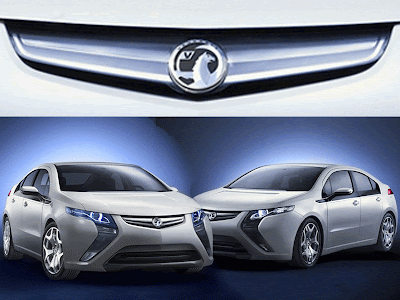
The most enlightening spy photos of the production version of the 2011 Opel Ampera plopped in our inbox today. At first we thought it was just the concept model out testing, but a closer look at the completely undisguised Ampera with the German license plates revealed that this is the actual production model that's due to go on sale in Europe and the UK (as a Vauxhall) in late 2011.


2011 Opel Vauxhall Ampera Plug-in Hybrid
Vauxhall Ampera will be unveiled along with Vauxhall Meriva compact MPV at the Geneva Motor Show 2010. Vauxhall Ampera, schedule for production late next year, is a five-door four-seater with same design DNA as Astra and the Car of the year-winning Insignia. Ampera uses extended-range electric vehicle (E-REV) technology. E-REV uses electricity as its primary power source, supplemented by a small engine to generate electricity for its motors when electric power runs low. This helps the Ampera overcome the ‘range anxiety’ issues associated with pure electric cars.

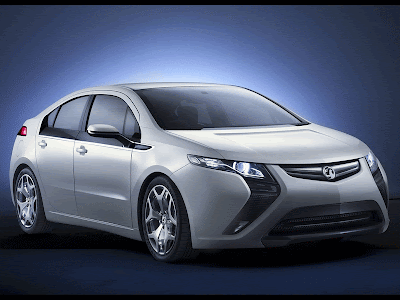
2011 Opel Vauxhall Ampera Plug-in Hybrid
Unlike other conventional propulsion systems, E-REV uses electricity as its primary power source, supplemented by a small engine to generate electricity for its motors when electric power runs low. This helps the Ampera overcome the ‘range anxiety’ issues associated with pure electric cars. Vauxhall will unveil not one, but two cars at this year’s Geneva Motor Show on March 2, with world premieres of the all-new Meriva compact MPV and a futuristic concept car, which is set to boost the company’s credentials as a leader in environmental vehicles.
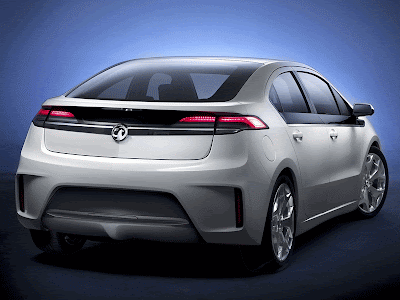
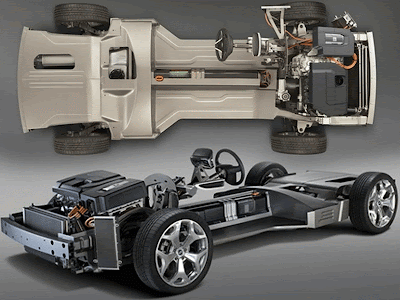
2011 Opel Vauxhall Ampera Plug-in Hybrid
A quick recap of the details we already know, the Ampera will use the same plug-in hybrid gasoline-electric drivetrain as the Volt. It mates a powerful electric motor and a 16-kWh, lithium-ion battery pack to a 75HP 1.4-liter gasoline engine. But unlike conventional hybrids that use gasoline engines to power the wheels when the battery is depleted, the Ampera uses the petrol unit to generate electricity for the electric motor that always drives the (front) wheels. Owners will be able to charge the battery pack with a home outlet and drive for about 64km or 40 miles before the gasoline engine-generator kicks in to extend the Ampera's range to more than to more than 300 miles or 480 kilometers.

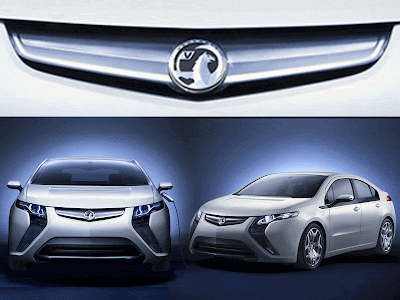
2011 Opel Vauxhall Ampera Plug-in Hybrid
Bolstering this message still further at the show will be the groundbreaking Ampera extended-range electric vehicle and Vauxhall’s most economical production car to date, the latest Corsa ecoFLEX.

2011 Opel Vauxhall Ampera Plug-in Hybrid
‘Vauxhall is covering all bases at Geneva,’ said Duncan Aldred, Vauxhall’s Managing Director. ‘With the Meriva, we have a unique and innovative take on family motoring, but the concept car and Ampera prove that we are truly at the forefront of environmental technology. These vehicles also show that their versatility and efficiency doesn’t come at the expense of stunning design.’
Subscribe to:
Posts (Atom)



